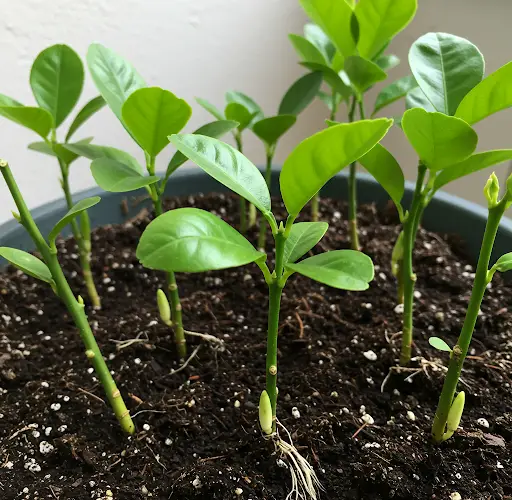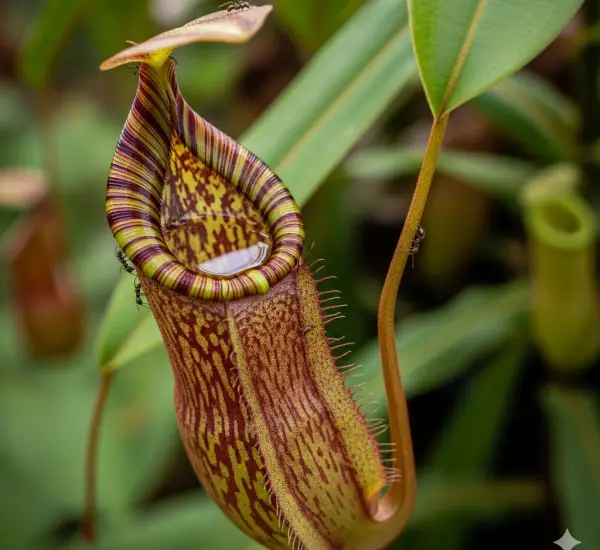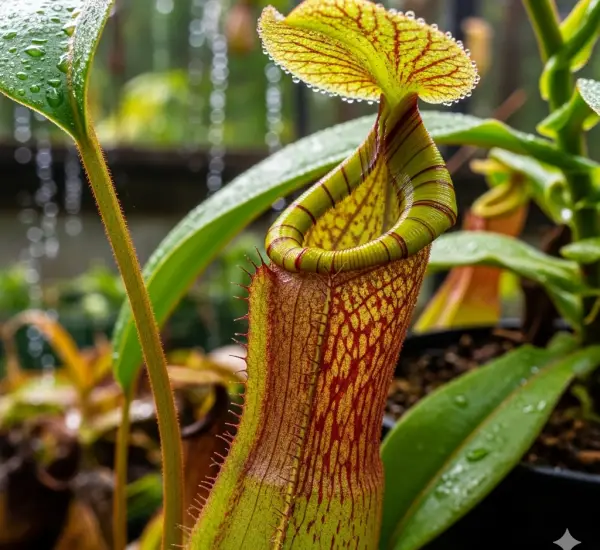How to Grow Lemons from Cuttings: A Step-by-Step Guide Using Natural Methods
Growing lemon trees from cuttings is a great way to expand your garden or orchard without waiting for years. With the right technique and care, you can propagate lemon trees quickly, ensuring the same quality fruit as the parent tree. This guide will show you how to propagate lemons from cuttings using natural methods, such as garlic for disinfection, shallots for root stimulation, and tomatoes as a rooting hormone. The combination of these natural elements, along with the proper care, will help ensure successful propagation.
Step 1: Selecting the Right Lemon Branch for Cuttings
The first step in propagating a lemon tree from cuttings is selecting a suitable branch. For the best results, choose an older, semi-woody branch. This type of branch is mature enough to produce roots but still flexible enough to root successfully. Look for a branch that is 6 to 9 centimeters long.
Using clean, sharp pruning shears or a knife, make a clean cut just below a node (the point where leaves or branches emerge). After cutting the branch, trim all the leaves from the lower half, leaving just the top leaves intact. This helps prevent the cutting from losing too much moisture while it establishes its roots.
Step 2: Disinfecting the Cutting with Garlic
Garlic is a powerful natural disinfectant with antibacterial properties that can help prevent fungal and bacterial infections. Disinfecting the cut end of your lemon cutting ensures a healthier start to the rooting process.
To use garlic as a disinfectant:
-
Crush a few garlic cloves.
-
Rub the crushed garlic directly onto the bottom cut of the lemon branch.
-
Make sure the garlic juice coats the surface thoroughly, which will help prevent infections and encourage root development.
This simple yet effective step will protect the cutting from harmful bacteria that could hinder the rooting process.
Step 3: Stimulating Root Growth with Shallots
Shallots are another natural substance known for their ability to stimulate root growth. The sulfur compounds and antioxidants in shallots promote healthy root development, making them an excellent addition to your propagation process.
To use shallots for root stimulation:
-
Peel a few shallots and crush them.
-
Soak the crushed shallots in a small amount of water for about 20 minutes.
-
Strain the mixture to separate the solid parts, leaving you with the shallot-infused water.
Dip the cut end of the lemon cutting into this shallot-infused water for several seconds. This treatment will stimulate the growth of new roots and ensure that the cutting has a better chance of success.
Step 4: Using Tomatoes as a Rooting Hormone
Tomatoes are packed with natural plant hormones, particularly auxins, which help promote the formation of roots in plant cuttings. These hormones are crucial for ensuring that the cutting develops a strong root system quickly.
To use tomatoes as a rooting hormone:
-
Cut a ripe tomato into small pieces and blend them into a paste.
-
Strain the paste to extract the juice.
-
Dip the base of the lemon cutting into the tomato juice for a few minutes before planting.
The tomato juice acts as a natural rooting hormone, giving the cutting an extra boost to help it root faster and more successfully.
Step 5: Preparing the Planting Medium – Using Sand
The next step in propagating lemon trees from cuttings is choosing the right planting medium. Sand is ideal for this purpose because it provides excellent drainage, which is essential for preventing root rot. Sand also allows for good airflow around the developing roots, ensuring they have enough oxygen to grow strong.
To prepare the planting medium:
-
Fill a small pot or seed tray with coarse, clean sand.
-
Moisten the sand lightly with water so that it is damp but not soaked.
The sand should be kept moist throughout the propagation process, as it helps maintain the right balance of moisture and air around the cutting.
Step 6: Planting the Lemon Cutting
Once the cutting is prepared and the planting medium is ready, it’s time to plant the lemon cutting. Insert the cut end of the branch into the damp sand about 3 to 4 centimeters deep. Make sure that the cutting stands upright and is secure in the sand.
After planting, place the pot or seed tray in a shaded area with indirect sunlight. Direct sunlight can be too harsh for young cuttings, so it’s important to keep them in a location where they won’t be exposed to too much sun. The ideal temperature for rooting is between 20–25°C (68–77°F), and the environment should be humid to encourage root growth.
Step 7: Watering the Cuttings
Watering is a critical component of successful propagation. For the best results, you should water your lemon cuttings at least twice a day—once in the morning and once in the evening. This will help keep the sand damp, ensuring that the cutting receives the moisture it needs to grow roots.
It’s important to avoid overwatering, as this can cause the cutting to rot. The sand should be moist but not waterlogged. Check regularly to ensure the medium stays at the right moisture level.
Step 8: Monitoring Growth and Results
After about 28 days, you should begin to see the results of your efforts. The lemon cutting should start developing roots, and new shoots may appear at the top. The garlic, shallot, and tomato treatments you applied will have worked together to promote healthy root and shoot growth.
You can check if the roots have formed by gently tugging on the cutting. If you feel resistance, it means the roots have taken hold and the cutting is ready for transplantation. If you see new growth, this is another sign that your lemon tree is thriving.
Step 9: Transplanting the Lemon Tree
Once the lemon cutting has developed strong roots and shoots, it’s time to transplant it into a larger pot or directly into the ground. If you choose to transplant it into a pot, ensure that it has good drainage and is filled with nutrient-rich soil. For planting in the ground, choose a location with well-draining soil and plenty of sunlight.
Continue to care for your new lemon tree by watering it regularly and protecting it from harsh weather conditions as it establishes itself in its new environment.
Final Thoughts
Growing lemon trees from cuttings is an enjoyable and rewarding process that can yield fast results. By using natural rooting stimulants such as garlic, shallots, and tomatoes, along with proper care and attention, you can successfully propagate lemon trees in about 28 days. Whether you’re looking to expand your garden or grow your own supply of fresh lemons, this method is a simple and effective way to get started.
Try these steps at home, and soon you’ll have healthy, thriving lemon trees in your garden!




